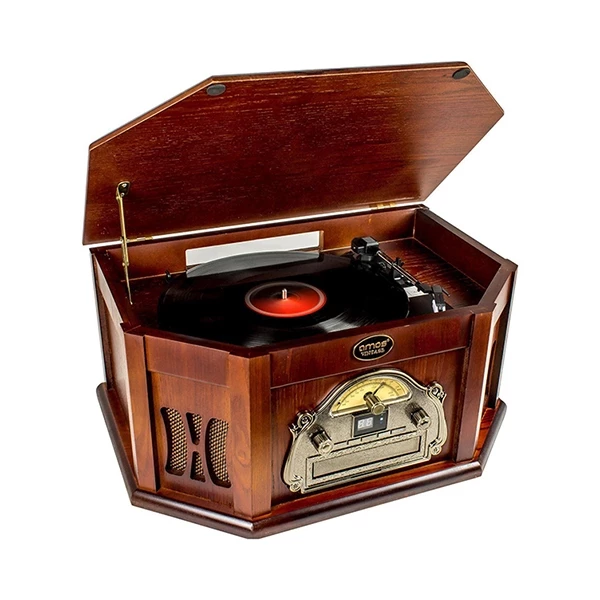In a world where digital streaming dominates, the revival of vinyl records has been one of the most unexpected developments in music culture. While vinyl was once assumed a relic of the past, it has been resurrected as a beloved medium for audiophiles and collectors alike. But not without complications.
As vinyl production increases to meet the demands of a new generation, environmental concerns have been unceremoniously shoved into the spotlight. In Australia, organisations such as APRA AMCOS are key players in the unexpected game.
The Role of APRA AMCOS in Vinyl Licensing
Peter Fenton is part of the media licensing team at APRA AMCOS, and he has the enthralling responsibility of overseeing the licensing of vinyl production.
“APRA focuses on performing rights, while AMCOS is the Australasian Mechanical Copyright Organisation,” Peter said.
Together, both entities ensure that songwriters and music publishers are compensated every time a song is reproduced on a physical medium, for example a vinyl record.

Fenton explained how licensing works for vinyl records.
“Every piece of vinyl gets licensed at a statutory rate of six per cent of whatever a record is sold for. We collect that and then distribute it to the songwriter or publisher.”
This licensing structure in place is vital for artists, allowing them to benefit from the vinyl resurgence even as the music landscape shifts more broadly towards streaming.
“It’s been a surprise to see physical media, which we thought would disappear, come back so strongly. It’s a testament to the unique appeal vinyl holds.”
The Unexpected Boom in Vinyl Demand

Time for a history lesson…
Vinyl production was declining in the 1990s and early 2000s, but the last 20 years has seen a massive swing back towards the plastic fantastic.
“Nine years ago, we thought vinyl would be obsolete. Now, we’re seeing record demand, not only among established collectors but also among younger generations,” Peter said.
This resurgence has also made licensing more complex, as APRA AMCOS works with international affiliates to clear rights for music manufactured overseas and then imported here.
Vinyl has become and icon of authenticity and physicality, and it embodies a rebellion against the intangible nature of digital streaming. There is also the nostalgia factor. Many see vinyl as a piece of history, a way to connect with music on a deeper level than digital platforms allow.
COLLECTION PICTURE
Believe or not, some vinyl collectors don’t even own turntables.
“Records are no longer just for listening. They’re becoming hunting trophies or ornamental ephemera,” Peter said.
“You see them on walls, on display shelves, as much for the aesthetic as for the music.”
Vinyls now being ‘trendy’ reflects the larger shift in how people perceive value in music, as records are both an experience and an investment in a physical collection.

The Rise of Special Editions and New Collecting Behaviours
As vinyl’s popularity has surged, so has the demand for limited editions and unique pressings. Collectors are constantly hunting for rare releases, colour variants, special packaging, as well as any and all ‘additions’ involved in the vinyl experience.
“People want this version or that special edition. It’s less about just owning the music and more about the exclusivity and uniqueness of the record,” Peter said.
This creates a new layer to the licensing and production process, with labels and artists wishing to cater to fans’ desire for exclusivity, and of course reap the monetary rewards.
Australia’s music scene is also responding to these demands. Local labels like Impressed Recordings in Sydney are meeting this interest with reissues that feature expanded liner notes and custom packaging.

This new approach has been incredibly well received, showing that fans appreciate not just the music but the story behind it. From a quantity perspective, Peter said that Australian band Lime Cordiale are producing significant amounts of vinyl to meet the demands of their dedicated fanbase, and based on the band’s ‘laid back’ vibe, this is not a surprise. The expectation is that as more artists embrace vinyl, the supply chain will continue to evolve to meet the market’s needs, with some limitations.
Environmental Implications of Vinyl Production
The vinyl revival presents a critical question: ‘How sustainable is vinyl production?’
Vinyl records are made from polyvinyl chloride (PVC), a plastic derived from petrochemicals. It is well known that PVC has a high carbon footprint, and its production process emits toxic chemicals that can harm the environment. This environmental impact stands in stark contrast to vinyl’s nostalgic and artistic image, and this concern is one that many artists and labels are thankfully beginning to acknowledge.

According to Peter Fenton, even industry giants are feeling the pressure to adopt greener practices.
“The industry isn’t known for restraint, but we’re seeing more attention to sustainable methods,” he said.
Artists like Billie Eilish have been vocal about incorporating recycled materials into their vinyl releases. Companies are also experimenting with alternative materials – though these efforts are still certainly in the early stages. Peter said that labels are cautious about overproducing vinyl, as they recognise the importance of releasing records with sustainability in mind.

Australia faces unique challenges. The limited infrastructure for sustainable vinyl production and the high cost of eco-friendly alternatives make it difficult for small, independent labels to prioritise sustainability in light of the vinyl boom. A handful of vinyl manufacturers are exploring closed-loop systems, where consumers can return records to be recycled. Although this remains a niche practice, it represents a step toward reducing the environmental footprint of vinyl.
Local Solutions and the Future of Sustainable Vinyl
Despite the challenges, there is still a growing movement within Australia to make vinyl more sustainable. Several Australian labels are collaborating with companies focused on reducing waste and using recycled materials. For instance, some vinyl releases now feature packaging made from recycled cardboard or plant-based inks. Independent vinyl manufacturers are also experimenting with eco-friendly PVC substitutes, although these are not yet widely available or affordable.
The industry has also seen a rise in community-supported projects aimed at sustainable vinyl production. As vinyl enthusiasts are increasingly interested in the origin and production of their records, some are calling for transparency from labels about the environmental impact of their products. This shift in consumer behaviour is encouraging more local labels and artists to explore ways to produce records responsibly.
New Generational Attitudes Toward Vinyl
The vinyl revival is not solely about older generations rediscovering the medium. Young people are embracing it fully. Born into the age of digital convenience, they find a certain allure in the analog nature of vinyl. Millennial and Gen Z fans are vinyl collecting as a form of rebellion against the impermanence of streaming platforms, where access to music feels intangible and fleeting. Instead, they want to hold music in their hands, to see and touch the art associated with it, be a part of the process, physically flip the disc as opposed to hitting skip.
“Younger fans are after something more tangible. There’s a desire for a physical connection to music and to the artists they admire,” Peter said.
“It’s heartening to see such interest in a physical product,” “but it’s essential that we approach this with a sense of responsibility for future generations.”

